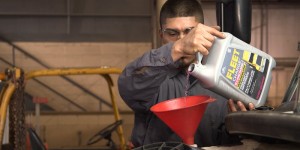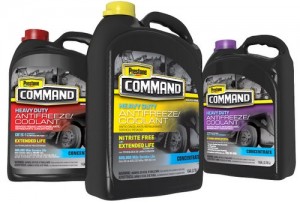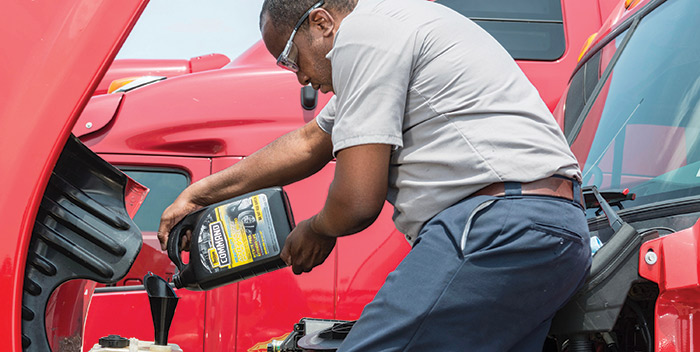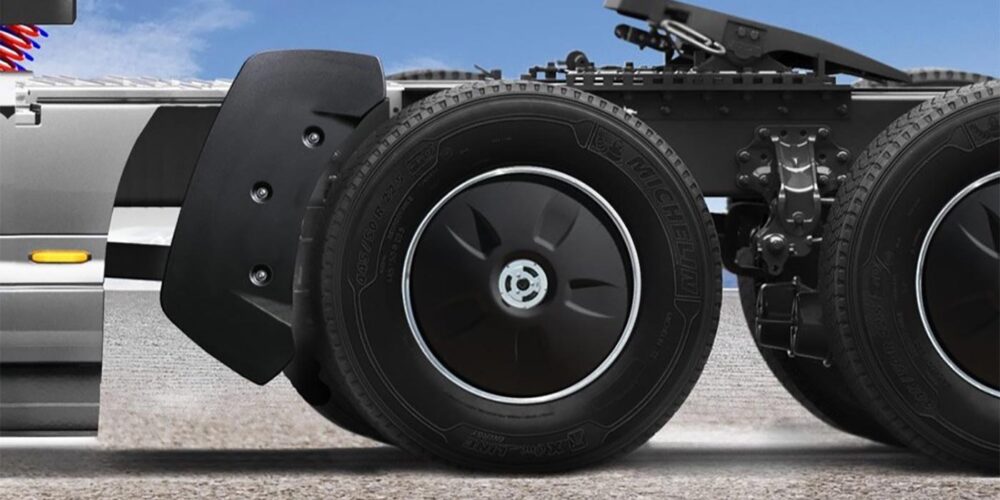What fleets need to know
 NF, OAT, GHG, ELC, color-coded systems—a lot of options, and a lot of acronyms. So let’s break it down: Here’s what fleets need to know, and how they can avoid being confused or mislead by all of these options.
NF, OAT, GHG, ELC, color-coded systems—a lot of options, and a lot of acronyms. So let’s break it down: Here’s what fleets need to know, and how they can avoid being confused or mislead by all of these options.
“Currently there is a lot of confusion, especially as certain OEMs have changed from a red nitrited OAT coolant to a red nitrite-free OAT coolant,” Prestone’s Dilley says. “This color confusion causes problems when it comes to testing what is in the cooling system. If there is confusion as to what is in the system or for problems related to blockage or coolant breakdown, flush and fill with nitrite-free coolant to prevent any nitrite-related issues that may occur.”
1. Fleets need to be sure that the coolant they’re spec’ing is compatible with their engine and application.
“Our experience at Prestone Command has shown that the major issue is mixing different coolant technologies,” says Dilley. “Test what is in the system. If it is mixed [silicate with OAT or NOAT], empty the system and refill with a nitrite-free fluid.
2. Watch out for improper water concentration.
“Often, a 50/50 coolant [equal parts concentrate and water] is topped off with additional water, leaving the vehicle underprotected from freezing/boiling over and corrosion,” Dilley says. “This usually happens after flushing a radiator. When refilling your coolant, be sure to pay close attention to the directions. When completed, always test the concentration to make sure you have the correct level.”
3. Check for bad water
Fleet should always check the water used for minerals and chloride using test strips.
Peak’s Turney agrees that improper mixing of coolants is one of the biggest issues. “There are many coolants on the market which are poorly formulated or use organic inhibitors that promote seal incompatibility with certain elastomers that are on the market,” Turney says. “Due to this, many coolant producers do not typically recommend mixing; however, mixing does occur. The biggest risk is mixing a robustly formulated coolant with a poorly formulated product, which promotes a reduction in desired performance.”
4. GHG Phase II
Engines and the upcoming final implementation of Greenhouse Gas Phase II? Will this affect coolant as well? “I do not anticipate any significant changes to coolant selection with the upcoming GHG Phase II requirements,” Turney says. “Some OEMs use an SCR, EGR and DPF hybrid system to exceed the EPA Phase I emissions restrictions, therefore I do not anticipate any significant modification to the engine, which would require any major redesign of coolant formulations in the market. Many manufacturers will likely focus on weight and the aerodynamics relative to cab and trailer design to improve fuel economy. I would suspect that we will likely see an increase in the use of aluminum components, which would further push the mark towards nitrite-free technology.”
There may be no direct changes coming as a result of GHG Phase II, but Prestone’s Dilley says the coming changes will make it “more important than ever” to use a high-quality coolant.
“GHG Phase II means engines will have to operate more efficiently and with fewer emissions,” Dilley says. “Blocked radiators, deposits in hoses and tubes, cavitation and other corrosion, poor water quality and the wrong concentration all lead to a reduction in ability to cool the engine. And all of these issues result in downtime and drive down profitability. You can avoid a lot of these issues with proven coolants from a trusted brand.”














